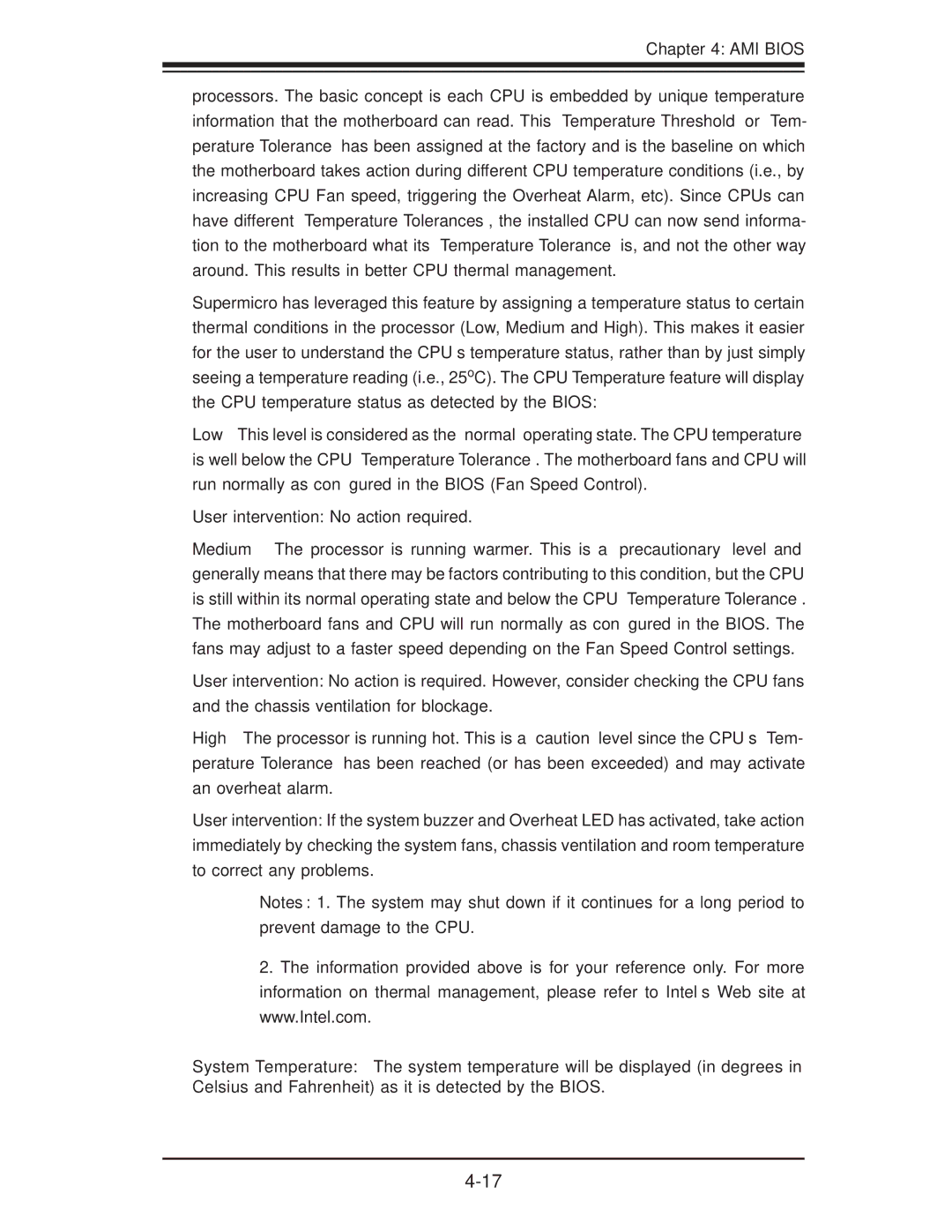X8DTE-F, X8DT6-F, X8DT6, X8DTE specifications
Super Micro Computer offers a robust line of server motherboards designed for high performance, reliability, and scalability. Among these are the X8DTE, X8DT6, X8DT6-F, and X8DTE-F models, which cater to diverse computing needs in enterprise environments.The X8DTE motherboard is equipped with an Intel 5500 chipset and supports dual-socket configurations, allowing for the installation of powerful Intel Xeon 5500 and 5600 series processors. With support for up to 192GB of DDR3 ECC memory, the X8DTE ensures data integrity and error correction, making it an ideal choice for mission-critical applications. It also features six SATA 3.0 Gb/s interfaces for storage solutions, ensuring high data transfer rates and ample storage capability.
The X8DT6 motherboard shines with its flexible architecture and support for dual CPUs, also accommodating the Intel Xeon 5500 and 5600 series processors. This model offers expansive memory potential, supporting up to 192GB of DDR3 ECC memory, which is crucial for applications demanding high memory bandwidth. Additionally, the X8DT6 provides optimized power management features, enhancing energy efficiency and reducing operational costs.
For those seeking advanced storage capabilities, the X8DT6-F and X8DTE-F variants come with integrated SAS support, offering enhanced performance for critical database applications. These models are designed to support Supermicro’s innovative SuperStorage systems, which can handle extensive data workloads efficiently. The X8DTE-F motherboard offers a total of eight 3.5-inch hot-swap drive bays, providing flexibility in storage management.
All four motherboard models feature Supermicro's robust security features, including chassis intrusion detection and a dedicated management controller for remote server management. Their compatibility with a wide range of operating systems and virtualization software, such as VMware and Microsoft Hyper-V, ensures that users can optimize their server environments tailored to specific workloads.
In conclusion, the Super Micro X8DTE, X8DT6, X8DT6-F, and X8DTE-F motherboards excel in delivering exceptional performance and reliability for demanding server applications. With their advanced technologies, extensive memory support, and versatile storage options, these motherboards represent an excellent choice for businesses seeking to enhance their computing infrastructure.

